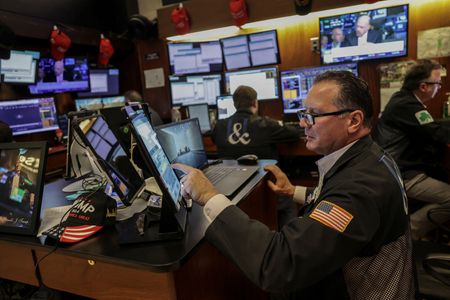By Nell Mackenzie
LONDON (Reuters) -Companies in the U.S. are expected to buy $1 trillion worth of their own stock in 2025 and remain the largest buyers of U.S. equities, according to Scott Rubner, Citadel Securities’ head of equity and equity derivatives strategy.
A corporate repurchase window, when companies can buy their own stock, reopens after companies’ blackout period.
The most recent corporate reporting season ends in August. Stock purchases, whether from investors trading equities or from the companies themselves, generally lead to asset prices rising.
WHY IT’S IMPORTANT
August is typically a positive month for stock markets and there has been a debate as to whether the scale of the rally is justified given ongoing uncertainties over U.S.
tariffs.
Big investors are staying out of markets for now and corporate buybacks may support higher asset values. Plus, earnings expectations this season are low, Rubner adds.
“I put the current set-up in baseball terms – inning 7 out of 9,” he said, referring to the final stages of a game.
KEY QUOTE(S)
“July seasonals are exceptional for U.S.
stocks. Since 1928, July is the best-performing month of the year for the S&P 500, while September is the worst-performing month of the year as investors go ‘back to school’,” Rubner said in a note released on Wednesday and seen by Reuters.
CONTEXT
The S&P 500 and Nasdaq indexes hit record highs on July 15, up 6.7% and 7.5% respectively so far this year.
MARKET REACTION
Citadel Securities’ retail trading flows have seen retail traders buy cash equities for the past 14 trading sessions, the longest daily retail buying streak since December 2024, which lasted 16 days, its note said.
There has been a competition in markets for who can buy the dip the fastest, said Rubner.
WHAT’S NEXT
“I think that equities can rally further from here led by positive seasonal factors, strong flow-of-funds, continued retail support, return of corporates, and final buy-in from fundamental investors,” he said.
GRAPHIC
(Reporting By Nell Mackenzie; Editing by Dhara Ranasinghe and Sharon Singleton)











